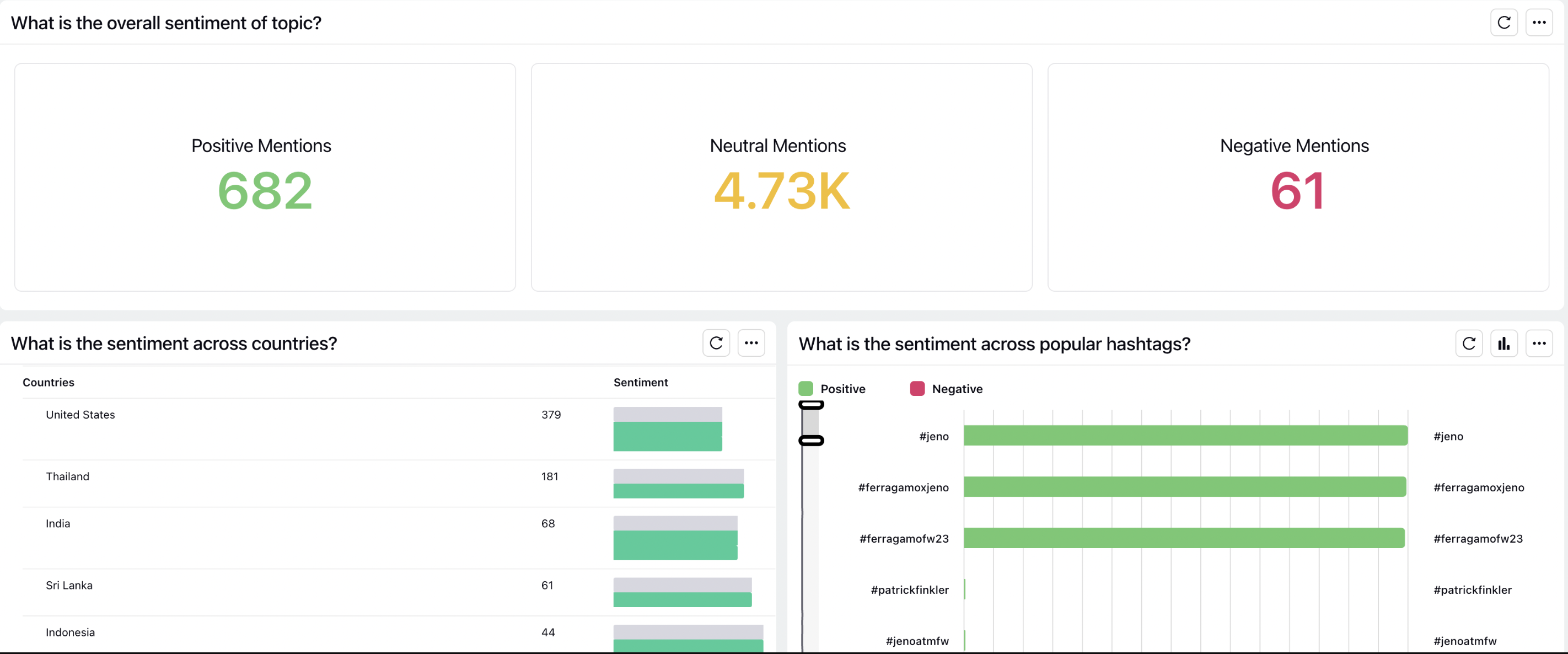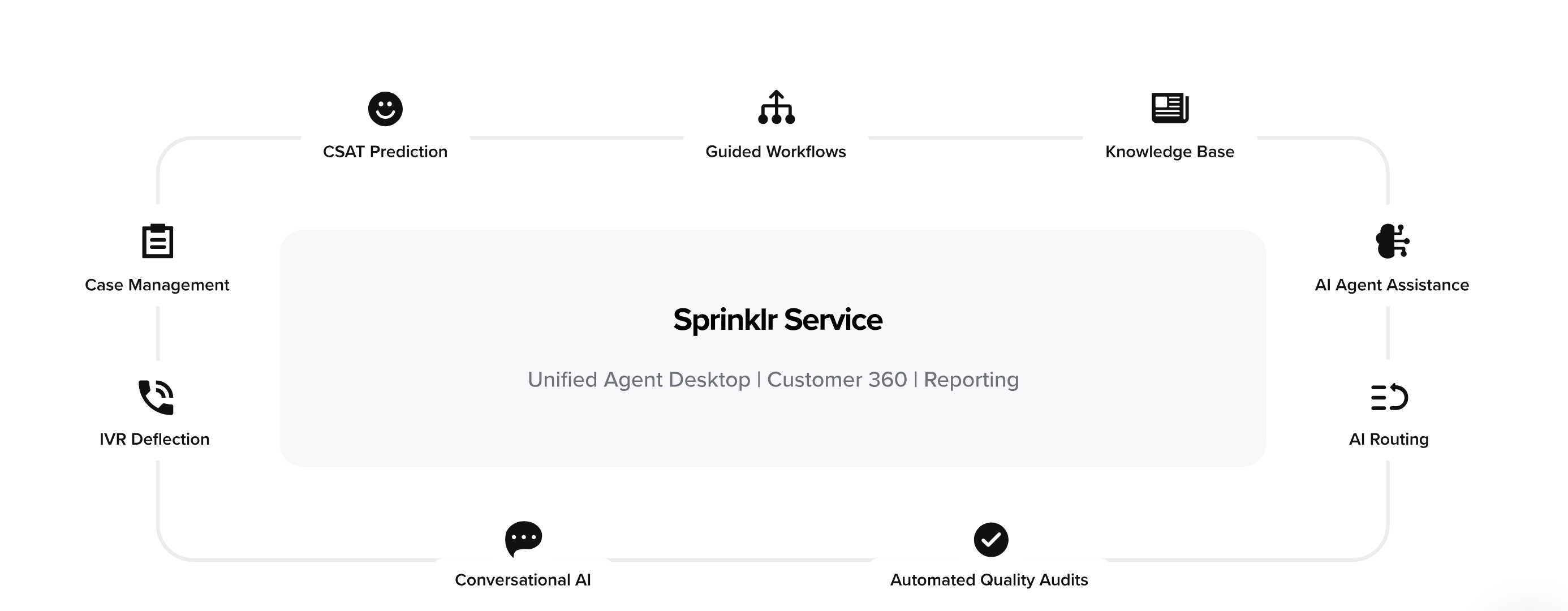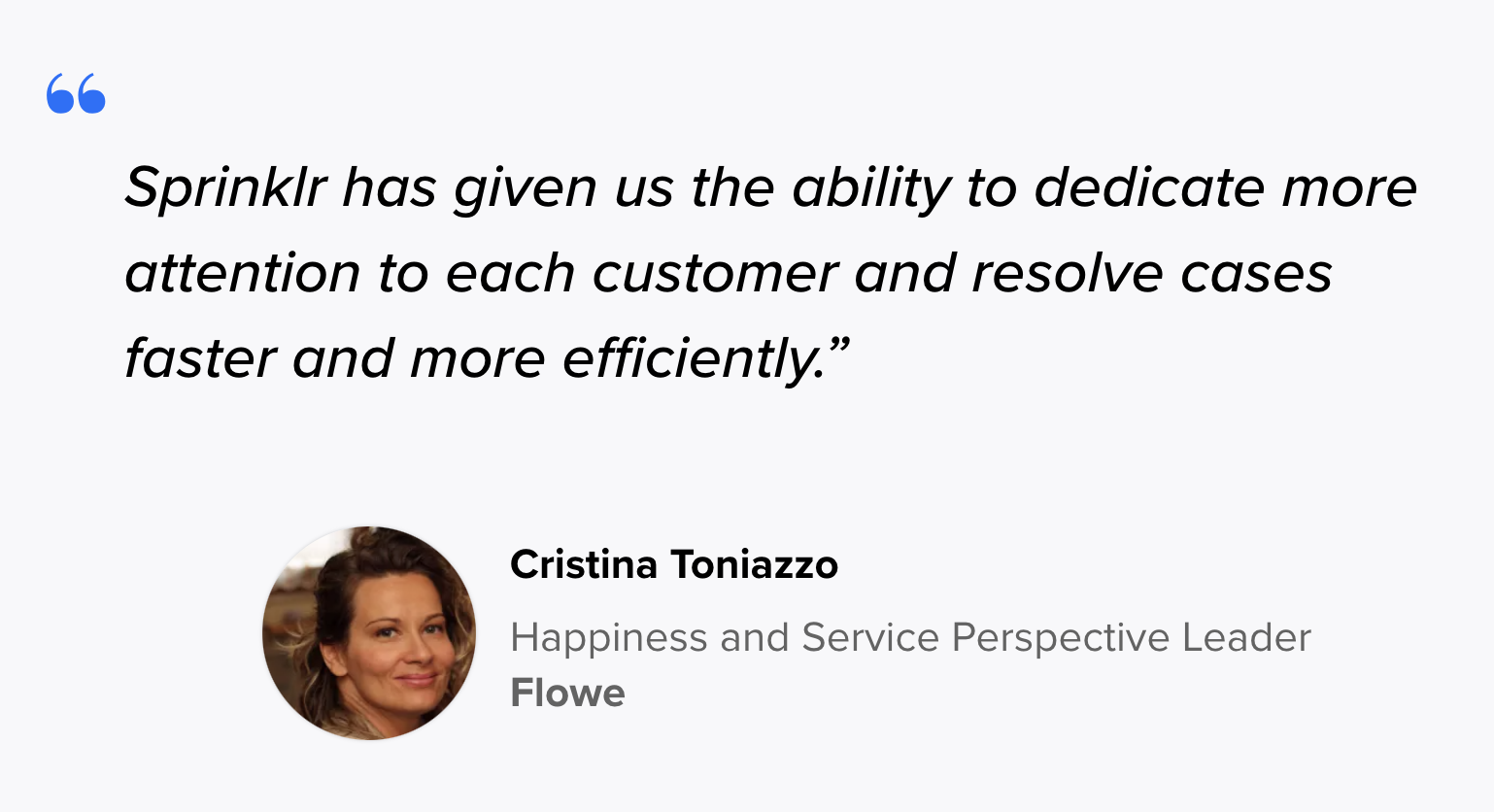Customer Experience as a Service (CXaaS) is a cloud-based solution, fully managed by external providers, that helps companies plan, execute and optimize their customer experience. The solution enables organizations to efficiently deliver the experiences, customers, expect while eliminating the need to establish costly in-house infrastructure and resources.
This approach enables businesses to scale operations, accelerate transformation and leverage existing technology investments. In essence, CXaaS empowers brands to implement customer-centric initiatives faster and more affordably, ensuring customers receive the best experience without complexity.
Why is CXaaS important for businesses?
CXaaS is crucial for businesses as it directly addresses the paramount importance of providing an exceptional customer experience (CX) in today's competitive landscape. Beyond the risk of losing customers due to substandard customer experience management (CXM), there is the added challenge of negative word-of-mouth spreading across the internet, tarnishing a brand's reputation.
To enhance CX, businesses often find scaling up their efforts challenging and turn to outsourcing CX and adopting CXaaS solutions. This not only leads to significant cost savings but, more importantly, enables companies to sift through vast data streams, extracting valuable insights to better understand customer behavior. The ability to handle massive volumes of customer data positions CXaaS as a powerful tool for improving customer engagement and support.
It also empowers companies to optimize every touchpoint during customer journey mapping, from the very 1st interaction to after-sales service, ensuring a satiating experience. It facilitates agility to let organizations stay flexible and respond to rising customer expectations and fluctuating market trends without disrupting the customer experience.
Overall, with the help of CXaaS, organizations can deliver uninterrupted experiences that foster customer trust and, eventually, better customer retention and customer lifetime value (CLV).
CXaaS vs. CCaaS vs. CPaaS
But now that you know how important CXaaS is for your business, let’s understand how it fares when compared to CCaaS (Contact Center as a Service) and CPaaS (Communication Platform as a Service) — two other integral solutions for incredible customer service. Let’s understand the key differences between the three from the below table.
Aspect | CXaaS | CCaaS | CPaaS |
Focus | Enhancing overall customer experience | Streamlining contact center functions | Enabling communication capabilities |
Goal | Improve customer satisfaction and loyalty | Enhance contact center efficiency | Facilitate seamless communication processes |
Components | Service talent, CX expertise, technology | Contact center applications, automation | Communication APIs, messaging, voice services |
Scope | Broad, covers end-to-end customer journey | Specific to contact center operations | Primarily focuses on communication tools |
Use Cases | CX transformation, data-driven insights | Inbound/outbound call handling, troubleshooting | App integrates communication features seamlessly |
Benefits | Improved customer retention, cost savings | Increased operational efficiency | Enhanced communication flexibility |
Technology | SaaS platform, analytics, AI | Cloud-based contact center solutions | APIs, SDKs |
Learn more: UCaaS or CCaaS — Which One Is Better?
How does CXaaS work?
CXaaS operates as a comprehensive solution, leveraging data, automation and analytics. Organizations can leverage CXaaS following these seven steps: -
Step 1: Assessment and understanding of customer needs
CXaaS begins by understanding the specific needs, pain points and preferences of your customers. This involves collecting customer data from interactions, feedback and back-end systems and creating a unified customer profile. Use customer segmentation based on demographics and psychographic analysis to group customer profiles into target groups.
Step 2: Creating a CX journey
CXaaS then creates a customer experience journey, plotting all the individual experiences and their interconnections. The next step is to build a CX roadmap tailored to your brand's objectives. This roadmap outlines strategies for efficiency and optimization and omnichannel customer experiences.
Step 3: Implementing technology
To enhance efficiency and reduce costs, CXaaS incorporates automation solutions for customer analytics, feedback management and multichannel communication. This may involve deploying customer service chatbots and automating routine tasks, allowing your team to focus on more complex customer interactions.
Step 4: Analytics for customer insights
Analytics plays a crucial role in CXaaS. The system gathers customer data, providing insights into their needs and preferences. This data-driven approach helps in understanding customer behavior and tailoring experiences accordingly.
Step 5: Prioritizing customer insights
Once insights are gathered, CXaaS prioritizes them based on their impact. This involves enabling customer self-service, using AI chatbots and sending proactive notifications. Prioritization aims to improve interactions while reducing the workload on customer support agents.
Step 6: Enhancing customer experiences
CXaaS focuses on improving overall customer experiences by acting on the insights gained. It involves actively implementing personalized outreach strategies, optimizing communication channels and refining processes based on customer feedback to cultivate lasting customer satisfaction and loyalty.
Step 7: Future-proofing the brand
The final stage involves expanding the CXaaS model across various customer-facing business units. This includes web optimization, personalized services and the use of advanced analytics for marketing and sales. The agile model ensures that the brand can adapt to changing business environments.
Top benefits of customer experience as a service
Once you successfully implement CXaaS, these are the nine major benefits you can get: -
Tech access: Stay updated with the latest advancements without the hassle of frequent upgrades.
Constant improvement: Optimize automated processes and agent services to enhance customer interactions and outcomes.
Cost efficiency: Consolidate vendors and reduce expenses through automation, leading to higher returns on investment.

System integration: Seamlessly incorporate CXaaS into your current platforms like IVR, ERP or CRM systems.
Data-driven insights: Gain a comprehensive understanding of customer behavior and preferences through sophisticated analytics.

Tailored solutions: Receive personalized CX strategies tailored to your specific business needs.
Consumption-based model: Pay only for agreed-upon outcomes, ensuring efficiency and cost-effectiveness.
Unified organization: Automate processes and leverage AI to foster collaboration across departments.

Operational agility: Adapt quickly to changes and scale operations efficiently with a constantly evolving CXaaS model.
Essential features and capabilities in CXaaS
To leverage the above benefits, you need to ensure the CXaaS solution you procure has these seven features:
👤Advanced chatbot functionality
Advanced chatbots should seamlessly integrate natural language processing (NLP) and machine learning algorithms to understand and respond to customer queries with accuracy and context awareness.
😀Personalized interactions
To utilize customer data to tailor communications and experiences, fostering deeper engagement and satisfaction through customized recommendations and responses.
⏰Real-time notifications
Timely and relevant notifications across various communication channels play a crucial role in keeping customers informed and engaged. Whether through text, voice, email or push notifications, the ability to deliver updates, alerts and promotions in real time enhances customer satisfaction and fosters loyalty.
➕Scalable solutions
To implement flexible systems capable of expanding or contracting in response to changing demands, ensuring resources are allocated efficiently, and growth is supported seamlessly.
🔄Automated processes
To implement software-driven workflows to handle repetitive tasks and transactions, reducing human intervention and accelerating processes for improved productivity and accuracy
📲Omnichannel support
To provide consistent service across all communication channels, allowing customers to interact seamlessly across platforms without disruption or inconsistency. By integrating communication channels such as WhatsApp, web chat, social media and email, businesses can meet customers where they are and deliver consistent, cohesive experiences.
⌛Proactive issue resolution
To utilize predictive analytics and monitoring tools to identify potential problems before they escalate, enabling proactive intervention and resolution to maintain customer satisfaction and trust.
How to select the right CXaaS partner for your company
Choosing the ideal CXaaS partner is integral to your success. Enterprises must assess potential partners across various criteria to ensure the seamless implementation of CXaaS. Below are the key things you need to consider:
1. Strategy alignment
Evaluate how the partner aligns their CX strategy with organizational goals to drive tangible business outcomes.
2. Technological capabilities
Determine how the partner's technology solutions contribute to a seamless CX ecosystem experience, particularly through AI, automation and analytics. Consider how their solutions mitigate technical debt and streamline operations.
3. Outcome ownership
Opt for a partner offering CXaaS in a consumption-based model, ensuring alignment of incentives and accountability for CX outcomes. Verify that the partner is committed to sharing risks and delivering value as the partnership progresses.
4. Managed services
Understand the scope of the partner's managed services for customer engagement and digital enablement to ensure comprehensive support.
5. Compliance and security
Verify your CXaaS partner adheres to industry regulations and compliance standards relevant to your business, such as GDPR, CCPA, HIPAA, etc. Additionally, prioritize partners with robust security measures in place to protect customer data and sensitive information.
6. Talent base
Assess whether the partner's talent pool meets specific needs and how they leverage technology to enhance the employee experience.
7. References and reviews
Seek references and reviews from other clients who have worked with the CXaaS partner to gain insights into their performance, reliability and customer satisfaction levels.
Use cases of CXaaS for businesses
Let’s learn some real use cases of CXaaS from mainstream verticals: -
Industry: Automobile
An auto manufacturer leveraged CXaaS to enhance the ownership experience. Their mobile app allows owners to schedule service appointments, track vehicle performance and receive software updates remotely, ensuring optimal performance and customer satisfaction.
Industry: Telecom
A telecom company utilized CXaaS platforms to offer omnichannel support, allowing customers to contact for assistance via phone, chat or social media. For instance, their customer support chatbot helps users troubleshoot common issues and provides account information, reducing wait times and improving satisfaction.
Industry: Banking
Flowe, an Italian digital bank, aims to facilitate a sustainable lifestyle for its users. As a young company appealing to a new customer segment, Flowe wanted to ensure a seamless, consistent and positive customer experience.
Flowe enhanced their customer experience by adopting Sprinklr's Unified-CXM platform. This decision helped them avoid fragmented customer data, an inconsistent customer experience and disjointed teams, which other financial services companies struggle with.
Outcome: Flowe welcomed more than 686,000 new customers in the first six months after their launch in 2020. With Sprinklr’s Unified-CXM platform, Flowe agents easily managed customer interactions at scale, which led to: -
67% growth in managed cases
100% agent onboarding rate
Unification of digital channels

Ready to say hello to new customers and welcome happy customers, just like Flowe did? Register for a demo of Sprinklr’s Unified-CXM platform to watch it in action.
Frequently Asked Questions
Thank you for contacting us.
A Sprinklr representative will be in touch with you shortly.
Contact us today, and we'll create a customized proposal that addresses your unique business needs.
Request a Demo
Welcome Back,
No need to fill out any forms — you're all set.



